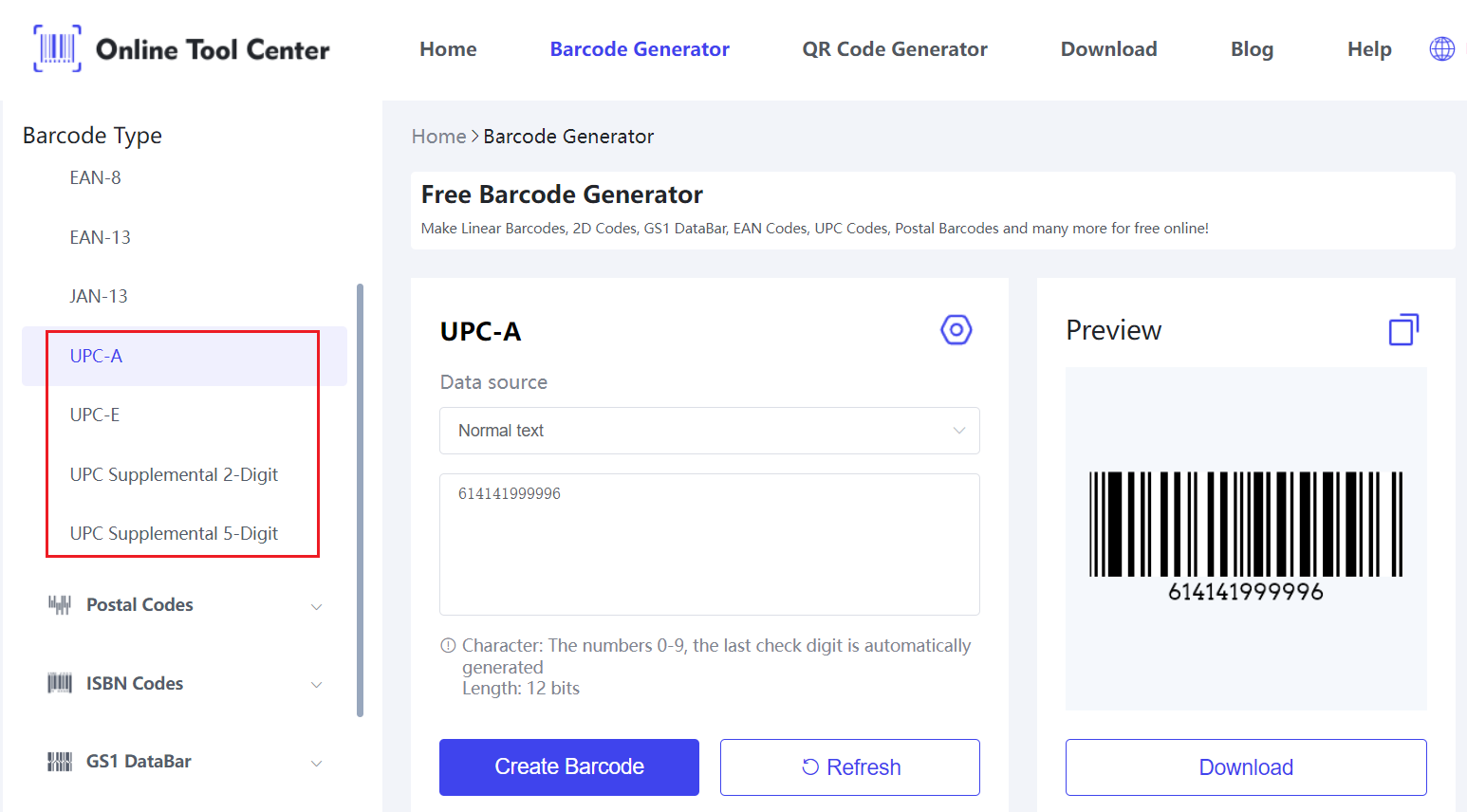GTIN and UPC codes ensure efficient product tracking, inventory management, and sales operations. But what exactly are GTIN and UPC, and how do they differ?
This article explores UPC codes vs GTIN in detail, highlighting their importance in e-commerce and how you can generate them using our free barcode generator.
What is GTIN?
GTIN, or Global Trade Item Number, is a standardized identification number used globally to identify products and services. This unique identifier can be 8, 12, 13, or 14 digits long, depending on the type of product and its market.
The GTIN ensures that each product is uniquely identified across different platforms and regions, facilitating global trade and inventory management.
What is UPC?
UPC, or Universal Product Code, is a specific type of GTIN primarily used in North America. The UPC is a 12-digit code that identifies individual products and is widely used in retail.
It consists of a machine-readable barcode and a human-readable 12-digit number. This code helps streamline the checkout process in stores and aids in inventory tracking and management.
What is GTIN VS UPC?
UPC vs GTIN: The main difference between GTIN and UPC lies in their scope and length.
While the UPC is a type of GTIN specifically used in North America with a fixed 12-digit format, GTIN is a broader term encompassing various code lengths used internationally.
GTINs can be 8, 12, 13, or 14 digits long, accommodating different product identification needs across the globe.
Importance of UPC and GTIN in E-commerce
Both UPC and GTIN play crucial roles in e-commerce by ensuring accurate product identification and seamless inventory management.
In e-commerce, where products are sold and shipped across various regions, having a standardized product identification system like GTIN and UPC is essential for maintaining consistency and accuracy.
Importance of UPC for Amazon Sellers
For Amazon sellers, having a UPC is mandatory for listing products. The UPC ensures that each product is uniquely identified, preventing duplicates and enhancing searchability.
Without a valid UPC, Amazon sellers cannot list their products, which can severely impact sales and visibility on the platform. Therefore, obtaining a UPC is a critical step for anyone looking to sell on Amazon.
Importance of GTIN
GTINs are essential for global trade and inventory management. They facilitate the tracking of products across different regions, ensuring consistency in product identification.
GTINs help businesses manage their supply chains more efficiently, reducing errors and improving operational efficiency.
Common Applications of GTIN and UPC
Applications of GTIN:
● Global Supply Chain Management: GTINs are used to track products across international borders, ensuring accurate identification and seamless movement through the supply chain.
● Retail and Inventory Management: Retailers use GTINs to manage stock levels, track sales, and replenish inventory efficiently.
Applications of UPC:
● Point of Sale Transactions: UPCs are used at checkout counters to scan products quickly and accurately, reducing checkout times and improving customer experience.
● Product Listings on E-commerce Platforms: UPCs are essential for listing products on e-commerce websites like Amazon, ensuring each product is uniquely identified and easily searchable.
How Do I Get GTIN?
To obtain a GTIN, you need to register with GS1, the global organization that standardizes GTINs. GS1 assigns a unique company prefix to your business, which you can use to generate GTINs for your products. The process involves:
● Registering with GS1: Visit the GS1 website and register your business to receive a unique company prefix.
● Generating GTINs: Use the assigned company prefix to create GTINs for your products. Each GTIN will include your company prefix, a unique product identifier, and a check digit.
How to Generate UPC?
Generating a UPC is straightforward with our UPC barcode generator.
Follow these steps:
1. Access our free UPC barcode generator.

2. Enter Product Information: Input the required product details, including the product name and unique identifier.
3. Generate UPC: Click the generate button to create your UPC. You can then download the barcode and use it on your product packaging.
How to Choose Between UPC and GTIN?
Choosing between UPC and GTIN depends on your business's geographical scope and product distribution needs.
If your business operates primarily in North America, UPCs might be more suitable due to their widespread acceptance in the region.
However, if your business has a global presence or plans to expand internationally, adopting GTINs would be more beneficial for seamless global trade and inventory management.
FAQs
1. What is the main difference between GTIN and UPC?
The main difference is that UPC is a type of GTIN used primarily in North America and is always 12 digits long, while GTIN is a global identifier that can be 8, 12, 13, or 14 digits long.
2. How do I convert my GTIN to UPC?
If your GTIN is already 12 digits long, it is essentially a UPC. If it is 13 or 14 digits, you cannot directly convert it to a UPC without adjusting the code to fit the 12-digit format, which may involve removing certain parts of the number.
In conclusion, understanding GTIN vs UPC is crucial for effective product management and global trade.
By choosing the right code for your business and using tools like Online Center Tool to generate barcodes, you can enhance your operational efficiency and customer satisfaction. Generate your UPC with our free UPC barcode generator now!




